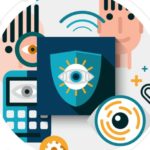 FindBiometrics President Peter O’Neill recently spoke with Iris ID‘s Vice President of Global Business Development and Sales, Mohammed Murad. The conversation begins on the topic of the recent Somaliland presidential election, in which Iris ID biometric technology played a crucial role, and how the success of that deployment will positively affect the iris biometrics industry at large. Murad goes on to speak about how the positive public perception of biometrics is changing thanks to the mobile biometrics revolution, and the importance of education in our industry. The interview concludes with a preview of what Iris ID has in store for the upcoming Mobile World Congress in Barcelona.
FindBiometrics President Peter O’Neill recently spoke with Iris ID‘s Vice President of Global Business Development and Sales, Mohammed Murad. The conversation begins on the topic of the recent Somaliland presidential election, in which Iris ID biometric technology played a crucial role, and how the success of that deployment will positively affect the iris biometrics industry at large. Murad goes on to speak about how the positive public perception of biometrics is changing thanks to the mobile biometrics revolution, and the importance of education in our industry. The interview concludes with a preview of what Iris ID has in store for the upcoming Mobile World Congress in Barcelona.
Read our full interview with Mohammed Murad, Vice President Global Business Development and Sales, Iris ID:
Peter O’Neill, President, FindBiometrics: Can we start off today by talking about your world-first news from Somaliland?
Mohammed Murad, Vice President Global Business Development and Sales, Iris ID: This is very exciting news, Peter. It’s the first country on the African continent to use iris recognition as a voter registration and authentication solution and then to successfully deliver the election results and peaceful transfer of power to the new president. It’s very exciting. We believe it will allow us to take this small country’s experience to help other countries. We’re getting a lot of buzz from this. Other countries are starting to look at iris recognition as a truly viable solution. We’ll be speaking about that at the ID4Africa Summit in Abjua, Nigeria.
FB: I understand duplicate registration was a problem that they needed to resolve, can you tell us a little bit about that please?
Iris ID: There were a couple of things: one was duplicate registration and the other was the high rejection rate with other biometric modalities. Somaliland’s National Elections Commission went through the exercise of registering voters with biometrics and the results were not acceptable to the authorities. So, they decided to test out iris recognition a couple of years ago. The results were so phenomenal they decided to implement the single modality of iris recognition. The other interesting thing was that they de-duplicated those identities in a central facility. However they also distributed the data to the local facilities where they were enrolling people for instant de-duplication. That’s the power of iris recognition. It can provide identity authentication in less than two seconds regardless size of the population.
FB: You started to talk a little bit about when you have this very successful deployment that it will have an impact on the marketplace, what do you think is going to happen next?
Iris ID: We believe, and see it starting to happen, that other countries of similar or larger size realize they can use iris technology. It’s not as expensive as imagined. People have the perception that iris recognition is sci-fi technology and is going to be very, very expensive. But we can deliver service that’s affordable and ready to be immediately deployed. We see this as a starting point on the right-hand side of the horn of Africa. But everybody is looking at this deployment and it’s going to go all the way down Africa as a solution for their future elections.
FB: That’s great news, Mohammed. You talked a little bit about my next question which is: iris technology is gaining momentum across the world in many vertical markets, why is that happening now? You mentioned the fact that the cost has come down significantly in the past five years especially, but what are some of the other drivers and why is everybody paying attention to iris now?
Iris ID: One thing we’ve always talked about, Peter, is the educational component of biometric technology. Now that everybody is carrying biometrics in their pockets they know it’s not something extraordinary, but that it’s a simple, convenient technology to use. The introduction of iris on mobile solutions gives people more comfort that this is simple stuff. That’s part of the education. Additionally, we have been educating the market that large-scale iris recognition is a good solution to deploy and implement. The return on investment is fast, the footprint for backend hardware is very small, and now there are multiple types of devices to assist with the acquisition in many different circumstances. All of that combined provides many reasons for our customers to look at iris recognition.
Additionally, iris recognition or biometrics in general were being looked at for just large-scale national ID programs. But we’re starting to see people looking at our non-contact solutions in many areas, including healthcare. We’ve been involved in many African healthcare applications where solutions are being deployed for vaccination authentication or the proper identification of AIDS patients to make sure the appropriate medication or services can be provided. We think education played a very important role and helped drive the cost down to a level where a device is a few hundred dollars – a few years ago it was thousands of dollars. The quick return of investment and education allowed our customers to look at iris recognition as a very strong authentication model.
FB: Thanks for that answer, it really explains why iris is moving so quickly now. I want to explore just one of your points a little further and that is education, because in our 15th Annual Year in Review, it appears that it is still one of the number one things our industry needs to focus on. Why is education so critical?
Iris ID: We need an answer for, “why biometrics.” The moment people think about biometrics they think Big Brother is watching and there’s privacy issues. It’s very important to let people know biometrics isn’t by any means an invasion of privacy. I think people are starting to realize that. The other application is on the mobile side where the cell phone industry brought biometrics onto their devices. That made it very simple for people to understand that biometric technology is here for convenience and protection, not for the invasion of privacy. That has people realizing they could start using these technology solutions to provide convenient services to their constituents or employees.
FB: You will also be at Mobile World Congress in Barcelona at the end of February, what will you be highlighting there?
Iris ID: The theme for the 2018 and 2019 and beyond for Iris ID is that we are the identity authentication company providing end-to-end security solutions at the enterprise level. We can walk you through the door, protect your workstation and provide an envelope of cyber ID and solutions for your applications. At MWC we’ll be demonstrating a mobile handheld model, the iCAM M300, that’s iris enabled. It allows an enterprise grant access to its facilities and puts a mobility solution into the hands of their security folks.
The other part we’ll be demonstrating is the workstation authentication technology. We’re bringing the iris solution to your desktop. There will be a new series of product lines coming from Iris ID that allows you to integrate iris recognition as an accessory to your workstations. As we all know, there is a huge discussion going on around the world about enterprise cyber security. We use iris recognition to provide end-to-end security on an enterprise or even on a B-to-C basis. Consumers are also looking to protect the laptops and work stations they use at home. We want to provide that as an accessory tool to our customers.
Those are the two products that we will be demonstrating at MWC, visit us at Stand 8.0L15.
FB: I certainly look forward to seeing you in Barcelona and thanks again Mohammed for taking the time to speak with us today.
Iris ID: Great, thank you very much, Peter. It’s always a pleasure.








Follow Us